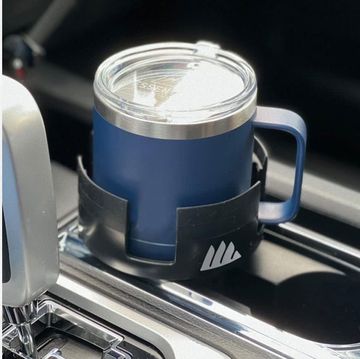The Heat Is On
Q: My battery failed after four years, which I thought was a little too soon. The repair shop that installed it thought the same, so they replaced the battery with a somewhat larger one, the biggest they could get to fit into the battery tray. They also did a full charging system checkout. Two years later the new battery failed, so they replaced it under warranty--but only half the cost was covered. It seems the fine print in the battery warranty says the battery price is prorated. And after two years, I was responsible for the use I had of it until it failed. They installed a new battery identical to the previous one. It lasted only 18 months. So, of course, I had to pay again. I feel like I'm renting these batteries. What's going on?
A: Normally, I suggest replacing the smallish standard battery with the largest one possible. This is a textbook example of someone honestly attempting to improve something, then screwing it up. I see it a lot.
Your original battery had enough room surrounding it for a simple plastic insulating blanket. This device is intended not only to keep your battery warm on cold nights--which it does--but also to keep the battery cool on hot days. Modern cars restrict the amount of air flowing through the engine compartment to improve both aerodynamic efficiency and economy. New engine compartments are pretty crowded. The elevated temperatures are enough to boil the electrolyte right out of the battery--hence, the simple insulator. Installing a bigger battery means there is no room for the insulation, which translates to short battery life, especially in warmer climates. You should try to rig up some insulation for your new battery, or at least replace the giant battery with one that permits the insulator to be reinstalled.
This is one of the reasons some cars have batteries installed in the trunk instead of underhood.
If your 2003-04 Ford Focus is hard to start or simply requires an extended cranking time, Technical Service Bulletin (TSB) 05-21-06 says this can be cured by reprogramming the powertrain control module with the latest software revision.
Shuddering shifts in your Chrysler vehicle, like a minivan or 300 or Magnum, with the 42RLE auto trans? ATF look murky? TSB 21-006-04 states the problem may be water contamination caused by a faulty bushing where the fill tube enters the case. There's a new bushing and fill tube to be added, followed by a transmission flush to replace the contaminated ATF+4.
Pipe Dreams
Q: I found this Web site that has details for building a water-powered car. Is this possible? It somehow takes the hydrogen out of the water and burns it.
A: Sigh. Every time gas prices climb, bunches of people pop out of the woodwork claiming to run cars on water. Several have contacted me, hoping I'll put their device in Popular Mechanics and make them rich and famous. See my story "Looking for a Miracle" debunking bogus gas-saving gadgets. The underlying idea behind this device is to install an electrically powered hydrogen generator under the hood that will provide an endless source of fuel by breaking down water into its component hydrogen and oxygen. The device may make hydrogen, as claimed. But it won't make your car run. The electricity required to dissociate the water represents more energy than you could recover by burning the hydrogen. There's no way around the Second Law of Thermodynamics.
Consumption
Q: I own a 2000 Cadillac Eldorado. I noticed that although it now has 71,000 miles, the engine still uses a lot of oil. It is not burning it; I don't see smoke coming out of the exhaust. The dealer tells me that this engine has a lot of moving parts and therefore "uses" oil, but doesn't burn it. What is a normal rate for a car to consume oil--let's say, in miles per quart? I use an expensive synthetic and I get ticked off at how fast this car is going through it. I can barely make it 6000 miles, which I consider to be a fair interval between oil changes.
A: All engines burn oil. Before I get a bag of mail from people telling me their engine doesn't ever use any oil, listen up. Oil in your crankcase gains in volume from contaminants such as water and unburned and partially burned fuel, compensating for the amount of oil that is consumed. Yes, emissions controls require that engine manufacturers engineer their products to use a minimum amount of oil. But, some oil still finds its way into the PCV system as vapor, and makes it past the rings and valve stem seals in liquid form. Normally, this oil is consumed in the catalytic converter, so you won't see any blue smoke until the engine is burning enough to make the converter fail. Your usage of only 1 quart per 6000 miles is really quite minor.
How much is too much? Manufacturers' specs vary, but the industry standard centers around 1000 miles per quart. Don't think just because you're using pricey synthetic oil that you can extend your oil-change interval. Under normal conditions, mineral oil doesn't break down in use. It gets contaminated with dirt, water, acids and fuel, and its additive package gets exhausted. Same for synthetics, and their life span is the same. Your car has an oil-life monitor built into the instrument panel. Follow the monitor's intervals for oil changes.
Glass Half-Full
Q: The fuel gauge on my 2000 GMC Savanna works fine when the tank is full, but once it drops below three-quarters or so, the needle starts bouncing all over the place. Sometimes it will register full when it has only a quarter tank of gas. The gauge never seems to drop below a quarter of a tank even when the vehicle runs out of gas--which was not funny to my wife when she made a trip to town and ran out of gas. When I came to her rescue, the gauge was still showing a quarter tank! Can you please help? I'm sure the sender must be in the gas tank. Does the tank have to be removed?
A: Bad news: The tank has to be removed from the vehicle. Worse news: The sender is part of the fuel pump assembly, which for your car costs $562.
However, you can buy a grease pencil to write the mileage of the last fill-up on the windshield for only a quarter.
It's time to change to a different-size hitch ball. This generally means hiking out to the truck with a Very Large Wrench for the nut on the bottom of the stud, and a pipe wrench to keep the ball from turning. There are two problems with this: It takes four hands to hold and turn two wrenches, and the pipe wrench does a number on your nice shiny chrome hitch ball.
Answer: Master Lock's One-Tool-Torque hitch ball and mount. The ingenious system indexes the ball to
the hitch with a simple pin, keeping it from spinning while you tighten the nut with one wrench. The balls will still fit any hitch, and the hitches will accept any balls. So you don't have to throw out anything because it won't fit the new system. masterlock.com
Photograph by James Westman













